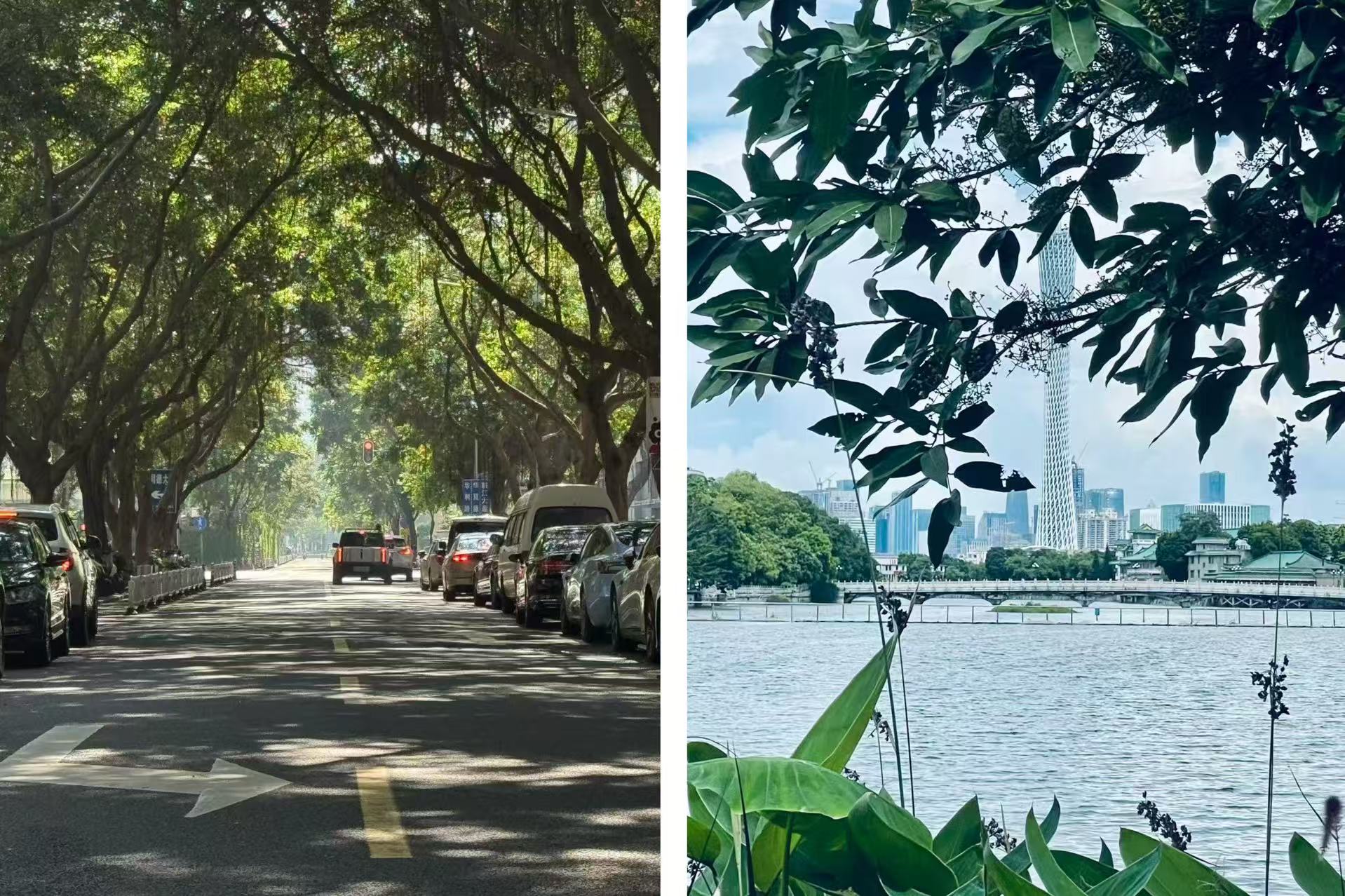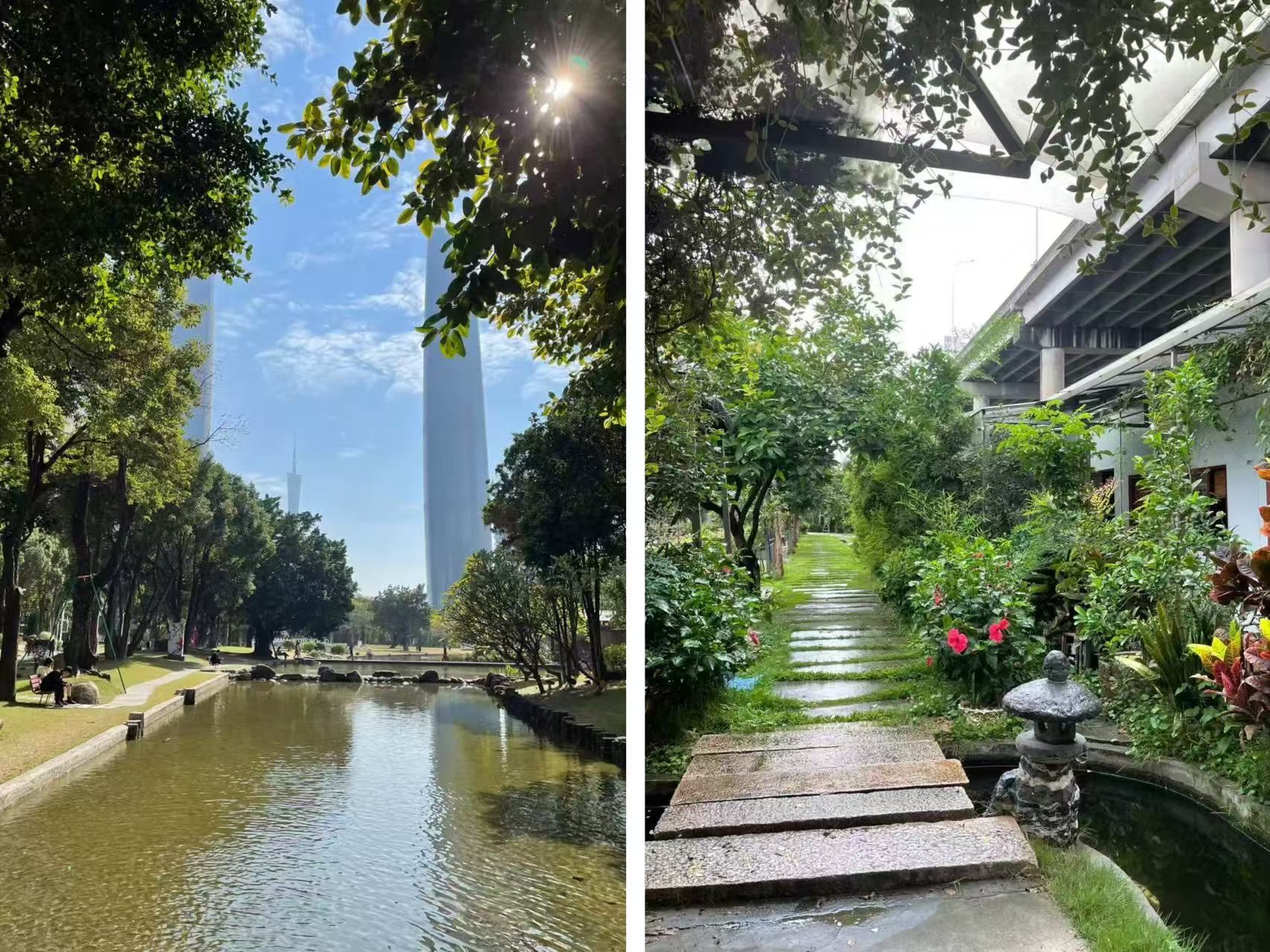City life has its own rhythm—fast, crowded, and endlessly buzzing.
Yet, in the middle of it all, a quiet corner of green can change the way you feel.
 Left: Huajiu Lu, Zhujiang New Town, Guangzhou, Right: Donghu Park, Guangzhou | Image by Rachel Wu/That's
Left: Huajiu Lu, Zhujiang New Town, Guangzhou, Right: Donghu Park, Guangzhou | Image by Rachel Wu/That's
Imagine stepping out of your office or closing your laptop, and experiencing the embrace of leafy canopies, listening to birdsong, and feeling city stress melt away.
A recent series of studies published by Harvard confirmed something urban dwellers have long sensed: just 20 minutes in a park can lower stress, sharpen focus, and leave you feeling more balanced.
Think of it as a small daily reset button, tucked between office towers and busy streets.
And it’s not just about being outside—what matters is how you engage with nature.
Maybe you pause under the shade of a tree with your morning coffee, watch the way light filters through the leaves, or take a slow walk where the noise of traffic fades into birdsong.
 Left: Huacheng Square, Guangzhou; Right: A Pocket Park in Liwan District, Guangzhou | Image by Rachel Wu/That's
Left: Huacheng Square, Guangzhou; Right: A Pocket Park in Liwan District, Guangzhou | Image by Rachel Wu/That's
These small rituals add up, nourishing mental health in a way no app or caffeine boost can quite match.
Some cities are already pushing to make this green reset part of daily life.
Take Guangzhou, where parks and pocket gardens are literally woven into urban rhythms.
The city has created 428 pocket parks and set a goal that by the end of 2025, each resident will enjoy at least 18m² of park green space, the highest per-capita level among China’s megacities.
Today, more than 95% of residents live within a 10-minute walk of a park, thanks to over 1,426 green spots across neighborhoods, from large urban oases to small community greens.
These spaces are integrated into commutes, lunch breaks, and evening strolls—making greenery a familiar friend.
Meanwhile, Shenzhen has pushed its green coverage of built-up areas past 45%, with over 1,320 parks, more than 300km of new greenways, and a per-person park access radius that now reaches 91% of residential land.
In Shanghai, the 15-minute community life circle initiative ensures that parks, pocket gardens, and pleasant tree-lined lanes are always within a short walk.
And in Beijing, a surge of pocket parks tucked into busy districts like Guomao and Sanlitun means that even hurried lunch-break walks can become restorative breaks among greenery.
The numbers are impressive, but the real story lives in the everyday.
It’s in the worker slipping into a shaded bench between meetings, the grandparents who walk laps under banyan trees, or the children racing bikes along park paths.
These simple moments remind us that the city’s true convenience is having green space woven into daily routines.
So here’s an invitation: think about the parks near where you live or work.
Do you have a favorite one that always lifts your mood?
Maybe a hidden pocket of green you escape to during lunch breaks?
Feel free to share them with photos and comments.
Because the more we talk about these spaces, the more we start valuing them—and making sure they remain part of our everyday city lives.
After all, a daily 20-minute reset doesn’t sound like much—but in a city, it could be the most powerful ritual of all.
[Cover image by Rachel Wu]






















0 User Comments